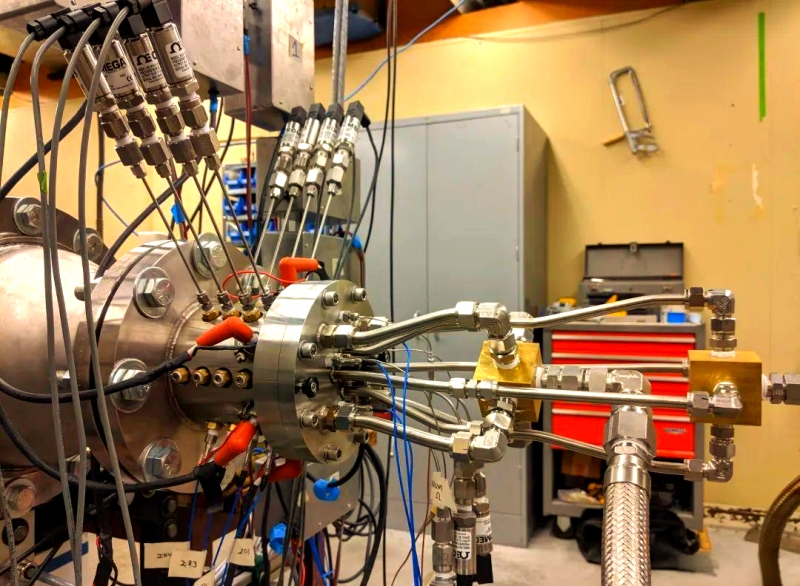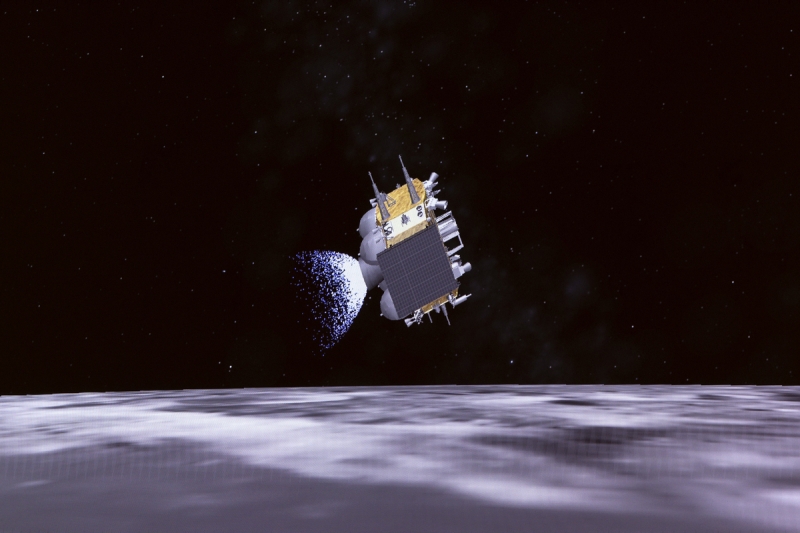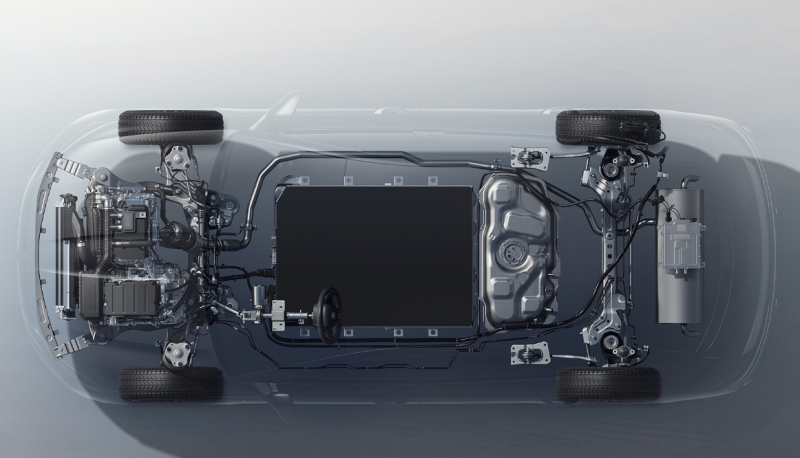Chinese scientist bulid world"s first jet fuel powered subverting traditional aerospace technology

Recently, the South China Morning Post disclosed that Professor Wang Bing's team from the School of Aerospace at Tsinghua University successfully developed a continuous rotating knock engine and successfully passed the flight demonstration test. The launch of this engine marks a historic step in China's aerospace field. Although the engine has not received widespread attention and its appearance is simple, some people have rated it as more advanced than the Dongfeng-17 missile because it is expected to lead a new round of revolution in the aerospace field. So, who is this engine that can trigger such a high evaluation?
Traditional engines rely on mechanical friction to operate, but their efficiency of converting kinetic energy into thermal energy is limited, making it difficult to achieve high-speed operation power of Mach 2.5 or above. In contrast, although the scramjet engine has higher power, it can only operate in a specific atmospheric environment above Mach 3.5, limiting its reusability and is mainly suitable for single-use high-speed missiles, such as China's Dongfeng-17 hypersonic missile. However, knock engines combine the advantages of traditional engines and ramjet engines, increase power through huge shock waves, and have the characteristics of repeated use, making their application wider.
In addition, we need to note that the continuous rotating knock engine developed by the Chinese team this time is unique in that it has rotating components inside the engine. The knock waves generated by knock combustion cause the pressure and temperature of combustible fuel to rise sharply, with pressures up to hundreds of atmospheric pressures and temperatures up to 2,000 degrees Celsius, which poses great challenges to traditional engine components. To overcome this problem, the engine adopts a concentric design, using rotating components to make propellant flow in the cylinder gap, simplifying the structure and reducing costs. At the same time, the heat released quickly after ignition forms a strong shock wave, and its pressure and temperature are significantly better than traditional engines.
But on the other hand, in order to generate a sufficiently powerful knock wave, the knock engine needs to achieve more than 100 explosions per second within the engine, which undoubtedly increases its technical difficulty and high requirements for materials. In contrast, other types of engines are relatively easier. Therefore, it is indeed appropriate to say that the knock engine technology is more advanced than the Dongfeng-17. So, what is the level of putting China's new knock engine on the international stage? In short, it is at least 30 years ahead of the West. At present, the United States is still working hard to solve the stability of scramjet engines, and research on hypersonic missiles has also been hindered, let alone in-depth research on knock engines.
Ironically, however, the concept of this knock engine was originally proposed by the Americans. After being regarded as a scam, the Chinese have successfully realized it. What kind of story is hidden behind it?
In fact, knock engines are not new things. As early as the 1950s, Soviet scientists had proposed relevant principles, aiming to catch up with the United States in the lunar landing competition. However, due to technical limitations, the knock engine has never been put into practice and has therefore not attracted widespread attention. It was not until the 1970s that the concept of knock engines was truly valued with the development of air defense missile technology and the exposure of the "Goddess of Dawn" plan. At that time, the United States planned to build an unprecedented high-altitude high-speed reconnaissance aircraft to deal with the Soviet threat. This demand has driven further research and development of knock engines.
In 1985, the U.S. military submitted a budget report to Congress, which mentioned a plan called "Goddess of Dawn", which was classified as "strategic reconnaissance." In the following two years, the U.S. military allocated as much as $2.2 billion to the "Goddess of Dawn" project, a move that made the project famous.
By 1988, a report from the New York Times unveiled the mystery of the "Goddess of Dawn" reconnaissance aircraft. The report pointed out that the United States is developing a new high-speed stealth reconnaissance aircraft to replace the SR-71. This reconnaissance aircraft can fly freely at an altitude of 30,000 meters at a speed of more than Mach 5. "When using SR-71, we are everywhere, but without a trace. But with new technology, we can even make them unable to find us."
However, what is the connection between the "Goddess of Dawn" and the knock engine? It turns out that the "Goddess of Dawn" reconnaissance aircraft has a design speed of more than Mach 5, far exceeding the limit of an ordinary turbofan engine. Under the technical conditions at that time, it seemed that only the ramjet engine could meet this demand. But the problem with ramjet engines is that they are mainly designed for supersonic missiles and lack power when flying at low speeds. Therefore, the pulse-detonation engine was introduced into the "Goddess of Dawn" program, balancing the needs of high-speed and low-speed flight with its unique performance.
In the later display of the US military, the wake generated by the "Goddess of Dawn" reconnaissance aircraft during flight showed a special gourd-like jet, which further confirmed that it used a pulsed detonation engine. It can be said that the knock engine is truly well-known to the world through the "Goddess of Dawn" plan.
However, to this day, the outside world has questioned the authenticity of the "Goddess of Dawn" plan. Some people believe that the so-called "Goddess of Dawn" plan does not actually exist, but is a "scam" carefully planned by the US military. Its purpose was to cooperate with the then "Star Wars" plan to fool the Soviets. Although this statement remains to be verified, it undoubtedly adds more mystery to the "Goddess of Dawn" plan.
After the collapse of the Soviet Union in the 1990s, reports on "Goddess of Dawn" gradually became rare. At the same time, the US military re-entered the SR-71 and began to transform the old-fashioned U-2 reconnaissance aircraft, which seemed to imply that the US military's interest in the "Goddess of Dawn" project had declined. Over time, by 2000, the US Global Hawk's high-altitude unmanned reconnaissance aircraft was officially put into service, which further triggered speculation that the "Goddess of Dawn" might be just a fiction.
In 2009, the United States unveiled a stealth unmanned reconnaissance aircraft called the RQ-170, which triggered speculation from the outside world about its association with the "Goddess of Dawn" project. However, just three years later, Iran successfully "captured" an RQ-170 with electronic jamming technology, revealing that it was only equipped with a turbofan engine, rather than the knock engine as previously speculated. This incident seems to have put an end to the myth of "Goddess of Dawn".
However, just like the development of hypersonic missiles and scramjet engines, the research and development of knock engines has also made progress in the pattern of "the West does not brighten the East". It is reported that the experimental team of Tsinghua University has finally developed this new engine from scratch through countless theoretical verifications and experiments in the past decade of exploration and attempts. At the beginning, the "Goddess of Dawn" plan misled the outside world for twenty years, making it generally believed that the knock engine was just a fiction of the Americans. But Chinese scientists firmly believe that this theory is feasible, so after ten years of careful research, they finally made the American "scam" a reality.








 Send Email
Send Email 18629269597
18629269597